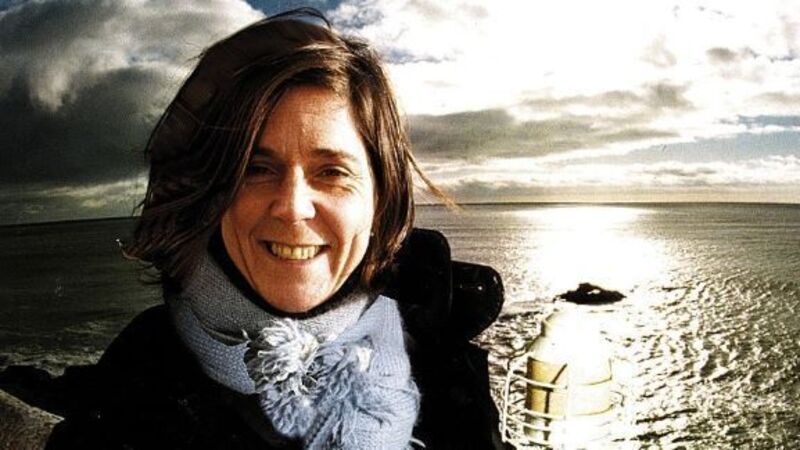Doing her homework

ARTIST Dorothy Cross’s formative years in Cork have inspired some of her best-known work. In her latest project, the two books, Montenotte and Fountainstown, Cross examines her father’s photographs of the places where she grew up.
Occasional Press, a specialised publisher run by Jim Savage and David Lilburn, proposed the project. The two books evolved out of their discussions. Ballynahinch Castle, Connemara, was a financial partner.
“They are primarily photographic books, so they had to be very good quality,” says Cross. “When I started looking at this whole thing I said, ‘would I use writers? Would I look at art writers? Would I ask John Berger, or whoever, to write about the places?’ And then I decided, ‘no’, it had to be a different kind of animal, because I am a visual artist and I’ve always had this sense that in Ireland words dominate. Even though I can talk about art forever, I wanted to try and create books that set up relationships from page to page, where there’s not really a narrative, but there’s hints of connection.”
Cross had considered her parents’ photo albums as a departure point for a project for Cork 2005, European Capital of Culture, which never came to fruition. “Now, I started looking at the images again,” she says. “That was a shift into looking at them in more of a remove of ourselves, as a possible centre of work.”
The books do not require knowledge of Cross’s family or career to be appreciated, but the overriding theme is the lives of Cross’s parent before she was born. Their meeting and backgrounds inspired the artist. The photographs are alongside imagery of Cross’s work.
“My father met my mother when she was 17 and he was 30,” says Cross. “They were sailing in separate boats in Glandore Harbour in West Cork. My mother was with her brothers and my father was with his buddies. A bachelor, 30 years old. They got married when my mother was just 19. She came back to live in Ireland with him.
“My mother was brought up in London and my father was brought up in Cork. He was brought up in the War of Independence, living in Sullivan’s Quay, with Black and Tans burning the city. My mother was 13 years younger and she was brought up in Dulwich, in London, in quite an urban environment. She was actually Irish, she was born in Blackrock and left Ireland when she was one. That was the backdrop to my life, the evidence and documentation of their lives that I had come into 30 years later as a kid.”
The Cross family home was a peeling grand house in Montonette, but in the summer they relocated to her father’s beach hut in Fountainstown. Each book pays tribute to a parent. The duality corresponds to Cross’ working life, in that her art has been concerned with creatures of the land and the sea.
“It is, in a sense, like a new photographic album,” says Cross. “It’s not about my life, it’s about the residue of my parents’ lives, I guess, tied in with the residue of material stuff that I was given by them. In the past, I’ve spoken in terms of disinheritance, because I’ve been brought up in Cork in this big, old, beautiful, peeling house in Montenotte, which was middle-class bourgeois but beautiful.
“My mother had this fantastic sense of emptiness. She never crammed the house full of things. She would cycle on her bike to Youghal, with my aunt, and go to auctions. She would have a room very sparsely decorated, and had a real eye for classical beauty.
“Whereas, with my father, you can see him in the Fountainstown book in his little hut — he has all these little anchors, tools and ship paraphernalia, a different aesthetic. He was a dreamer about the ocean. He always wanted to go to sea or to raise donkeys, but he didn’t do either, really, because he inherited a garage called Cross and Sons, which was down on Sullivan’s Quay. It’s gone now, but you’d see a photograph of it in the book.
“It was beautiful, it was very art deco, with mosaics like in the 1940s and ’50s. He had a different sense of style. There is this thing about an inherited sense of aesthetic. I was very conscious of what they considered beautiful.”
Cross is best known for her work with cow skins — she uses the udders provocatively. Her move from Dublin City to Connemara, some years ago, has created a shift in her work, and the sea has taken centre stage. She works in a variety of media. As demonstrated in the books, connections can be made between many of her works and her family.
“You have these snips from real life into my works, which are strange mutations,” says Cross. “I actually inherited them from my family home in a lot of my early works. For example, my grandmother gave me the satin train of her wedding dress when I was about 14, so that I could probably make a blouse out of it. The way I work is I might keep them for years and years, and later — in that case when I was working with the cow’s skin to make a piece called Virgin Shroud that’s now in Tate Modern, where the cow’s udder is on the head — I lined it with my grandmother’s wedding train, because the satin worked perfectly with the brutality of the skin.
“That was a way of taking something that had a very particular history and shifting it into a very different territory, where it combines with quite strange things at times, though not always. That is, I believe, in some ways what art does. Through some kind of shift, the transformation occurs, and some new meaning might happen, if you’re lucky.”
Two versions of the books were printed, 850 paperback copies and a limited hardback edition of 150, each featuring a Dorothy Cross etching depicting a pair of daddy-long-legs mating. “It’s a beautiful, little black print, almost like a Japanese drawing, of these interconnected daddy-long-legs. Somebody asked me why I chose that in terms of the context of the book. In Fountainstown, as a kid, I have great memories of there being daddy-long-legs everywhere. So it’s that thing of one daddy-long-legs meeting another, just like my mother met my father in the boat in Glandore Harbour and they got together. That equals my existence in a way.”
* The books Fountainstown and Montonette are only available through Ballynahinch Castle: brid@ballynahinch-castle.com










